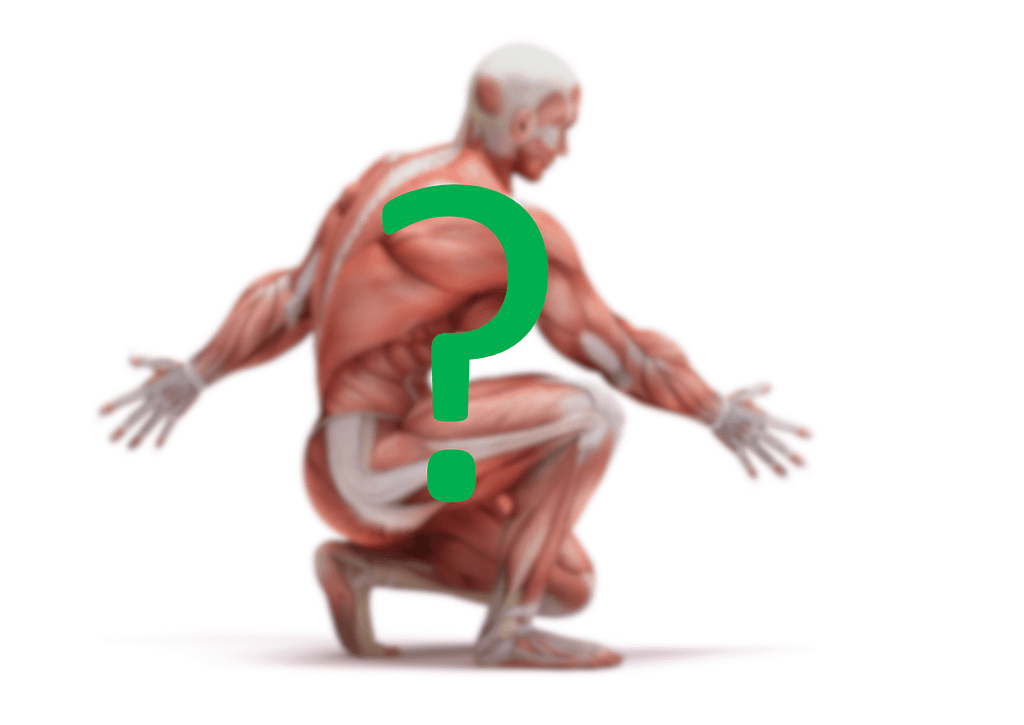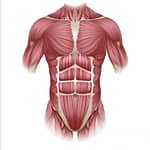Unveiling Your “Core”: Demystifying This Amazing Muscle Group !
Finally a simple understanding of our “Core Muscles” and their importance within our everyday life!

When it comes to fitness and overall well-being, the term “core muscles” is frequently loosely tossed around. So what exactly are these muscles, and why are they so important to us and our day-to-day living? As we embark on this exploration, let’s uncover the secrets and unravel the vital roles they play in supporting your body.
What muscles make up the core?

A major misconception that is thrown around is the considered muscles within your “core muscles”. Being able to gain clarity on this will facilitate effective prescription in building a strong core. Comprising of all the muscles that act and attach to the spine or pelvis, the three categorised groups involve:
1. Abdominal Muscles – Rectus Abdominus, Internal Obliques, External Obliques & Transverse Abdominus.
2. Posterior/Back Muscles – Thoracolumbar, Lumbar, Lateral Thoracolumbar & Latissimus Dorsi
3. Lower Extremity Groups – Gluteal muscles, Adductor muscles, Hip Rotators, as well as Hamstring & Hip flexor muscles.
Read throughout this blog to delve deeper into the specifics of each considered group and its further muscles!
What is the role of your core regarding health and fitness?

The role of your core regarding fitness and general health circumstances is critical, rendering these muscles indispensable to the overall makeup and performance of your body. It is not simply labelled the ‘core’ because it is located at the centre of your body; rather, it is a crucial component of our musculoskeletal system that plays a vital role in various movements and functions.
Firstly, appropriate core function aids in stability and posture, particularly within the hips and spine, thereby reducing the likelihood of musculoskeletal imbalances and recurrent pain (in particular lower back pain).
Additionally, being strong in this area facilitates greater movement and flexibility, as well as enhanced balance and coordination. These elements, when working in tandem, allow for greater movement efficiency, effectiveness, and overall performance. Finally, a robust core not only helps protect internal organs but also contributes to an overall healthy balance.
What is the best way to strengthen your core?

Effective core training involves exercises that target the appropriate muscles collectively, providing strength, stability, and balance to the entire region. As mentioned, your core is made up of numerous muscles and muscle groups that should be worked appropriately through a variety of different exercises.
Trying to keep this as simple as possible to get started, we have split these into our three main groups, with exercises potentially following:
1. Abdominal Muscles: Dead Bug → Russian Twist → Bicycle Crunches
2. Posterior/Back Muscles: Bird Dog → Side Plank → Bent Over Row
3. Lower Extremities: Deadlift → Squat → Bulgarian Split Squat
Following these exercises in a progressive order will help allow for a safe yet effective progression in building the appropriate muscles to create a strong core. Read on and follow future blogs for further information and exercise progressions that can be implemented into your training regime!
Defining the Core Muscles:
Your core muscles are not just a singular entity but a group of muscles that work together to provide stability, balance, and support to your entire body functions. They comprise of all the muscles that act and attach to the spine or pelvis. They are primarily within your torso, however these also include numerous muscles below your pelvis.

These muscles can be categorised into three (3) main groups:
- Abdominal Muscles
- Commonly mistaken for your core, your abdominals are made up of several different muscles that are an important component of your core, however, are not the only ones.
- The four main muscles found within your abdominal region comprise;
- Rectus Abdominis – Allows for flexion of the spine. High activation during a ‘sit up’ exercise
- External Obliques – Facilitates trunk flexion, lateral flexion and rotation. High activation during a ‘Russian twist’ exercise.
- Internal Obliques – Works in conjunction with the External Obliques to aid in lateral flexion and rotation.
- Transverse Abdominis – Helps provide spinal support and abdominal tension. Worked best during a ‘dead bug’ exercise.
- Posterior / Back Muscles
- Another common misconception is that your core muscles are only found on the anterior, or front part, of your body. This is not the case, as your posterior, or back part of your body also holds significant value in the makeup too. Keeping this area strong aids in reducing potential imbalances, which will help reduce the likelihood of injury and facilitate greater movement efficiency and effectiveness. Core muscles within the posterior chain comprise:
- Thoracolumbar Muscles
- Consisting of your iliocostalis, Longissimus, and Spinalis muscles, collectively known as your ‘Erector Spinae’, these muscles help extend and laterally flex your trunk, as well as support the spine.
- Lumbar Muscles
- Muscles again comprising of your Erector Spinae group, as well as your Quadratus Lumborum (QL) help provide necessary stability to the hips and spine to create and maintain healthy movement patterns.
- Another pivotal muscle is the Multifidus, which is located within the lumbar and thoracic region of your spine. This muscle helps create spinal support and offers deep core stability.
- Lateral Thoraco-Lumbar muscles
- Finally, your thoracic-lumbar muscles are very similar to the previously mentioned External Obliques, providing support during lateral flexion and rotation. In saying this, it is important to strengthen the lateral, or side area of your core, to create equilibrium within.
- Latissimus Dorsi
- The final muscle involves your Latissimus Dorsi, AKA your “Lats”. This large muscle may come as a surprise, but its involvement mustn’t be overlooked. Not only due to its role in helping with spinal support, but your lats also hold major engagement in vital movements such as climbing/pulling-up, or swinging, which have an indirect correlation to the need for a strong core.
- As well as this, your lats impose on shoulder and scapular movements, which are vital for postural health, further holding indirect contributions to correct spine and core alignments.
- Thoracolumbar Muscles
- Another common misconception is that your core muscles are only found on the anterior, or front part, of your body. This is not the case, as your posterior, or back part of your body also holds significant value in the makeup too. Keeping this area strong aids in reducing potential imbalances, which will help reduce the likelihood of injury and facilitate greater movement efficiency and effectiveness. Core muscles within the posterior chain comprise:
- Lower extremities
- As mentioned, the make-up of your “core muscles” are any muscles that act and attach to the spine or pelvis. As a result, your lower extremity muscles fall into this category and have more influence than you may think!
- Lower extremity muscles impact the core for various reasons but fall under the holistic thought that there is heavy involvement through their functional connections and interactions. This concept will be delved into, but for the time being, let’s clarify the relevant lower extremity muscles.
- Gluteal Muscles – Mainly consisting of your Gluteus Minimus, Medius and most importantly, your Gluteus Maximus. The primary impact these have on the core is due to the large role involved in hip movement and stability. Pelvis stability must also not be overlooked.
- Adductors – The three muscles the Adductor Longus, Magnus and Brevis make up your adductors. Although they don’t bear as much impact as the gluteal muscles, your adductors indirectly influence your core due to their heavy involvement in maintaining pelvic stability and positioning. With this in mind, high levels of core stability will subdue.
- Hamstrings and Hip Flexors – The main muscles that make up the hamstrings are the biceps femoris, semimembranosus, and semitendinosus. Moreover, the muscles considered within your hip flexors involve the iliopsoas, rectus femoris, and sartorius. Similarly to the adductors, your hamstrings and hip flexors indirectly influence core strength by impacting the positioning and stability of the pelvis, as well as spinal support. Hence through an indirect correlation, core strength is heavily influenced through pelvic and lumbar stability to allow for efficient and effective movement patterns.
- Hip Rotators – Hip rotators being your piriformis, gemelli and obturator muscle groups all hold a role considered within your core due to their interconnectedness throughout. Similarly to the previous groups, this holistic group helps stabilise the pelvis to keep it neutral, allowing for correct positioning and reduced likelihood of strength imbalances and further poor core engagement.
Functions of the Core Muscles:
Now that we’ve identified the key players in your core, let’s delve into the functions that make these muscles indispensable to your body’s overall performance.
- Stability and Posture:
- The core muscles act as a stabilizing force, helping you maintain balance and good posture. Whether you’re sitting at a desk, standing, or engaging in physical activities, being strong within is essential for preventing slouching and reducing the risk of back pain.
- Spinal Support:
- Your core muscles, particularly the Transverse Abdominis and Erector Spinae, work together to support the spine. This support is crucial for preventing injuries and promoting spinal health.
- Movement and Flexibility:
- Strong core muscles facilitate a wide range of movements, from bending and twisting to lifting and reaching. Whether you’re participating in sports, exercising, or performing everyday tasks, a well-conditioned core enhances your overall flexibility and agility.
- Balance and Coordination:
- The core is your body’s central point of gravity. Being well-developed in this area contributes to better balance and coordination, reducing the risk of falls and enhancing your overall athletic performance.
- Protecting Internal Organs:
- The Transverse Abdominis acts as a protective shield for your internal organs. A strong core helps stabilize the pelvis and shields the lower back, providing additional support to vital organs.

Strengthening Your Core:
Now that we understand the significance of core muscles, how can we strengthen them? Incorporating targeted exercises into your fitness routine is key. Below are some effective exercises for each group of core muscles, with video demonstrations:
- Abdominal Muscles
- Posterior / Back Muscles
- Lower Extremities

There has been and continues to be a huge body of research regarding the best exercises for increasing core strength. The most recent information indicates that greater recruitment, thus improvements are achieved via large compound exercises such as squatting, and deadlifts. Considering this, it is critical to incorporate these lifts into your routine wherever possible.
Remember to ensure the safety and technique of these exercises before increasing volume and quantity. Further, consider following our future blogs for further information and exercise progressions that can be implemented into your training regime to help continue to build a stronger core session by session!
Dead-Bug
Russian Twist
Bicycle Crunches
Bird Dog
Side Plank
Bent Over Row
Deadlift
Squat
Rear Foot Elevated Lunge / Bulgarian Split Squat
Conclusion:
Your core muscles are the unsung heroes of your body, providing the foundation for strength, stability, and overall well-being. Whether you’re an athlete aiming to improve performance or someone looking to enhance everyday movements, understanding and nurturing your core muscles should be a fundamental part of your fitness journey. So, here’s to a strong and resilient core that supports you in all your endeavours!
If you need further guidance, please reach out to us and take advantage of a free 15-minute telehealth consultation with our exercise physiologist.
Written by Paolo Mitry, an Exercise Physiologist at Activ8 Health Club










